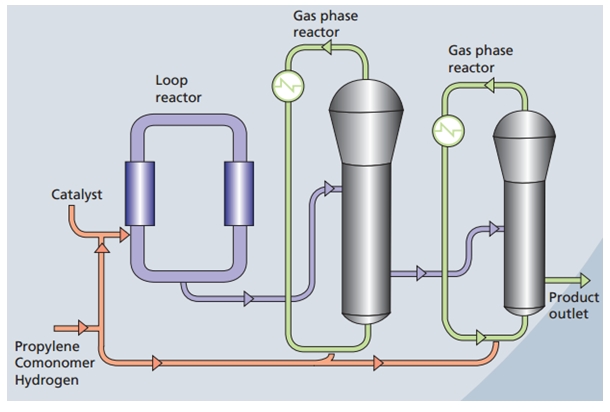PP – Polypropylene – Manufacturing process
Polypropylene is currently one of the fastest growing polymers. Much of this growth is attributed to polypropylene’s ability to displace conventional materials (wood, glass, metal) and other thermoplastics at lower cost. Polypropylene (PP) is a tough, rigid plastic and produced in a variety of molecular weights and crystallinities.
Polypropylene is made from the polymerization of propylene gas in the presence of a catalyst system, usually Ziegler-Natta or metallocene catalyst. Polymerization conditions (temperature, pressure and reactant concentrations) are set by the polymer grade to be produced.
Various production and manufacturing processes of PP exist with some general similarities. They are taking place either in a gas-phase (fluidized bed or stirred reactor) or a liquid-phase process (slurry or solution). An example of flow diagram corresponding to each of the two types of processes is illustrated in figure 1 bellow. The gas-phase polymerization is economical and flexible and can accommodate a large variety of catalysts. It is the most common technology in modern polypropylene production plants. Relevant technologies are Novolen®, Unipol® (gas-phase processes), Borstar® and Spheripol® (liquid-phase processes).


well-dispersed additives.

